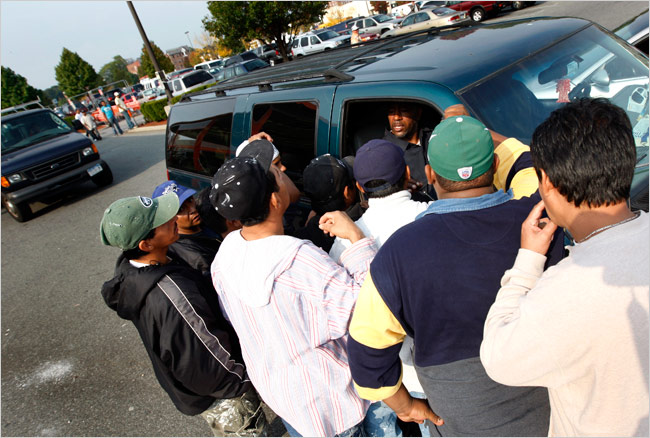| Want to send this page or a link to a friend? Click on mail at the top of this window. |
More Special Reports |
| Posted October 19, 2008 |
| Market for day Laborers Sours With the Economy |
|
|
|
 |
|
| BÉATRICE DE GÉA FOR THE NEW YORK TIMES | |
| Day laborers rush to a car to negotiate for potential wok in a Home Depot parking in Hempstead, N.Y. |
| By KIRK SEMPLE |
| Wehaitians.com, the scholarly journal of democracy and human rights |
| More from wehaitians.com |